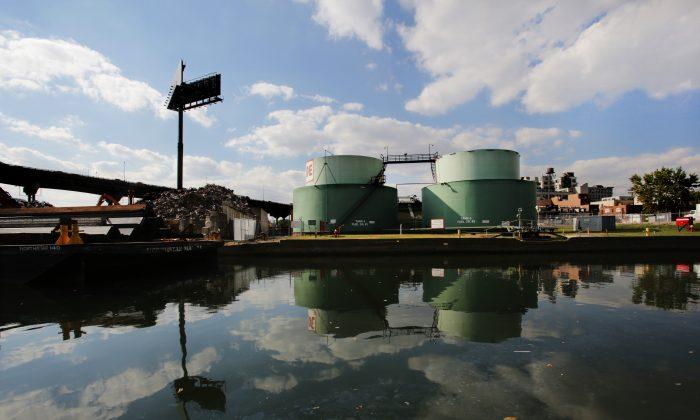NEW YORK—After years of enduring the stench of the Gowanus Canal, neighborhood residents convened to brainstorm on the future of their beloved, historic waterway.
More than 200 locals attended the first general community board meeting. Their ideas for change didn’t stop at just clean up.
Residents also want an esplanade along the canal, park space, a more vibrant lower 4th Avenue, affordable housing, preservation of historical sites, and better protection in extreme weather conditions.
Council Member Brad Lander said the issue of the canal is pressing as New York City turns over to the new administration.
“It’s a high priority of mine,” he said.
The Gowanus community includes Cobble Hill, Carroll Gardens, Park Slope, and Red Hook.
“People have both a compelling vision and genuine anxiety about what’s going to happen,” he said.
The community will have two more general meetings in the new year to further discuss and narrow down the concerns of the residents, and to provide some recommendations to the new mayor.
Gowanus has been known as an industrial center which creates divisions between the manufacturing businesses and residents who want to see local businesses strive.
“At some point we’ll have to really address where there are different points of views and trade offs,” Lander said.
Residents now enter the stage of “working groups,” which means that they will have to convene again and introduce creative solutions.
Senior Organizer for Planning and Policy with the Pratt Center for Community Development, Elena Conte, will be overlooking the next meetings and will be organizing and working with the community to come up with solutions.
“We’re really shaping what the next administration does and what happens in the neighborhood,” Conte said.
In 2010, the Gowanus was placed on Environmental Protection Agency (EPA) Superfund National Priorities List, and in September of this year the agency reached the decision to investigate the canal.
Gowanus is “one of the nation’s most extensively contaminated water bodies,” according to the EPA.
The water pollution resulted from stormwater runoffs, sewer outflows, industrial pollutants, and discharges including contaminants like PCBs, coal tar wastes, heavy metals, and volatile organics.
Residents are encouraged to submit their ideas for the future of the community on BridgingGowanus.org.






Friends Read Free